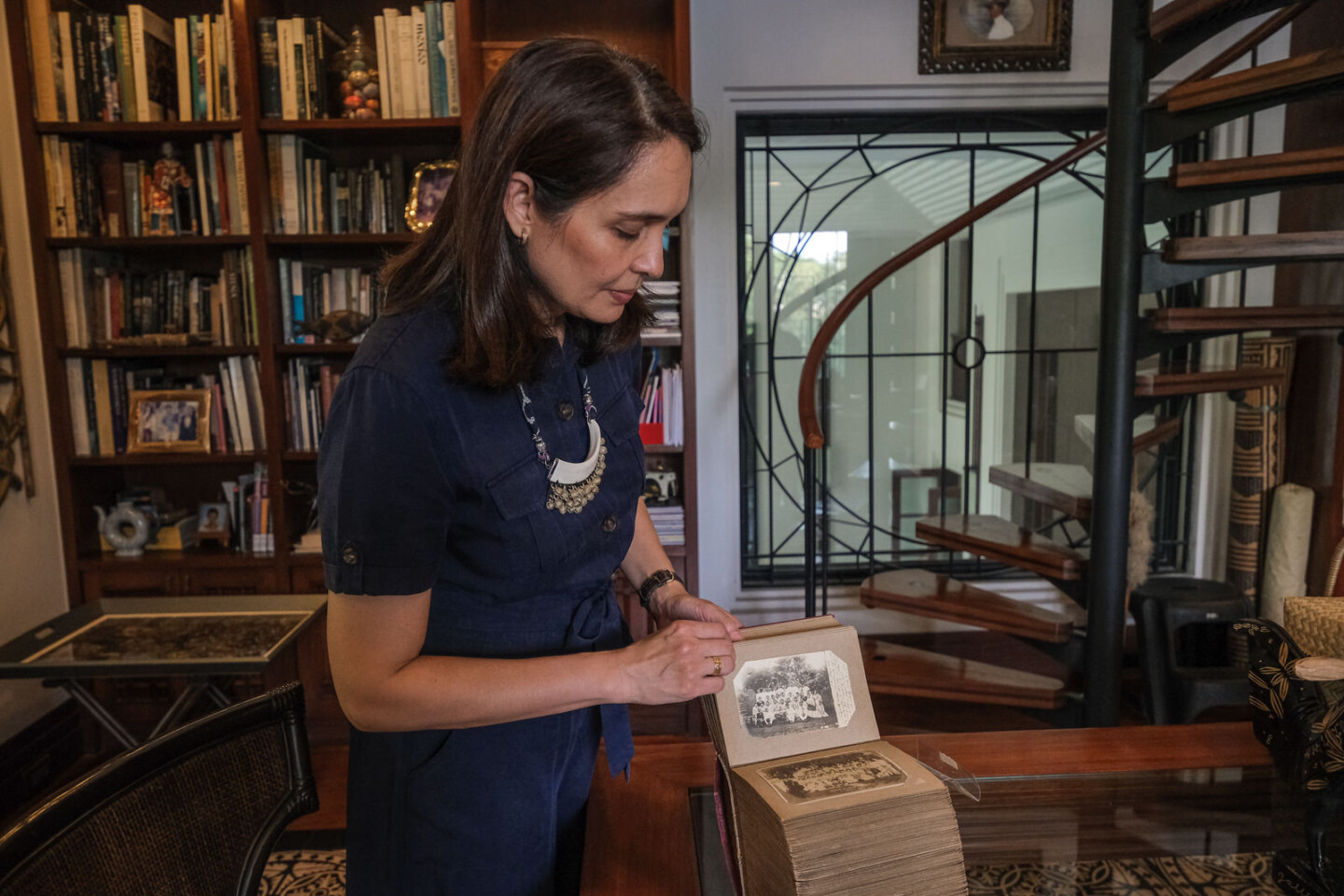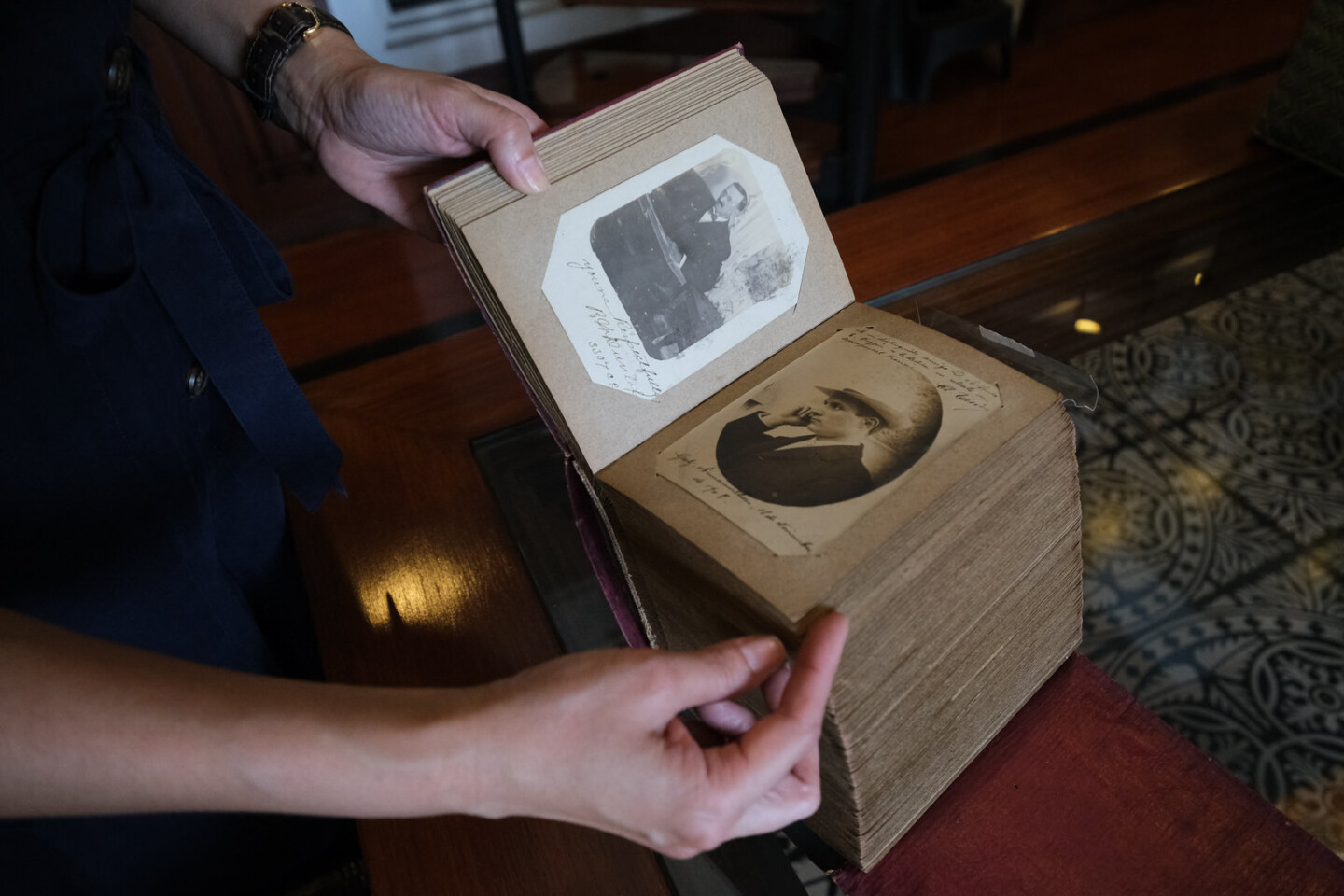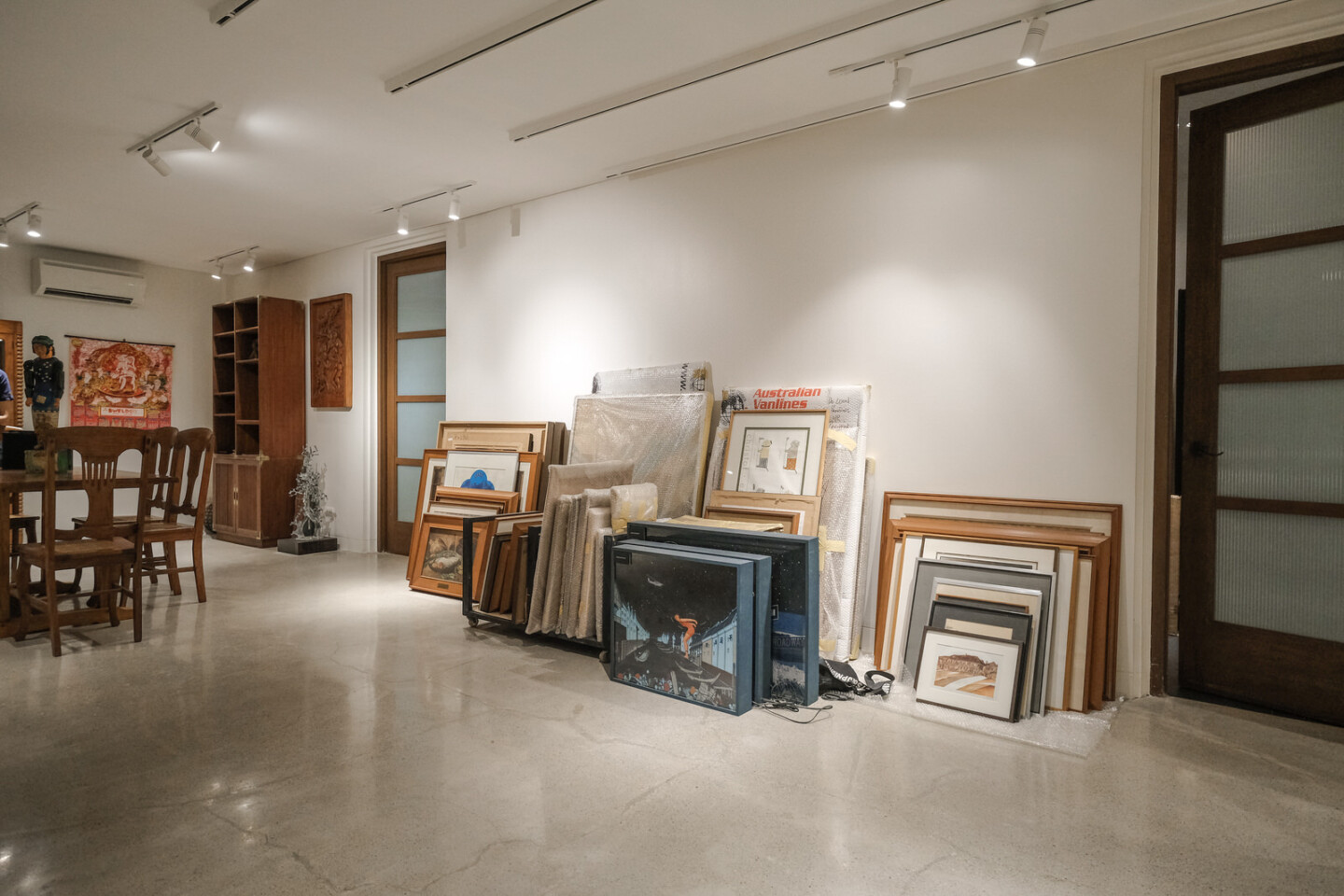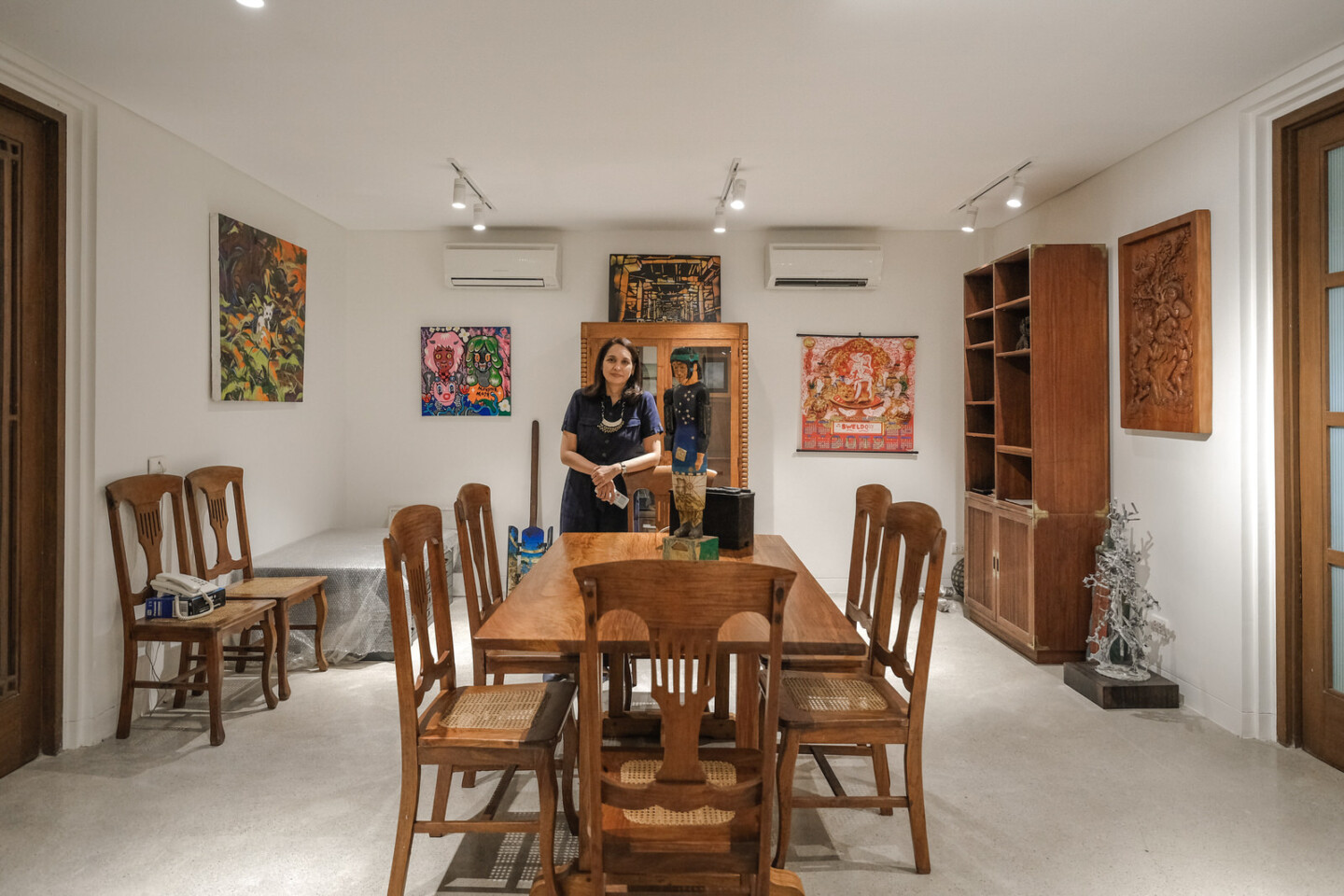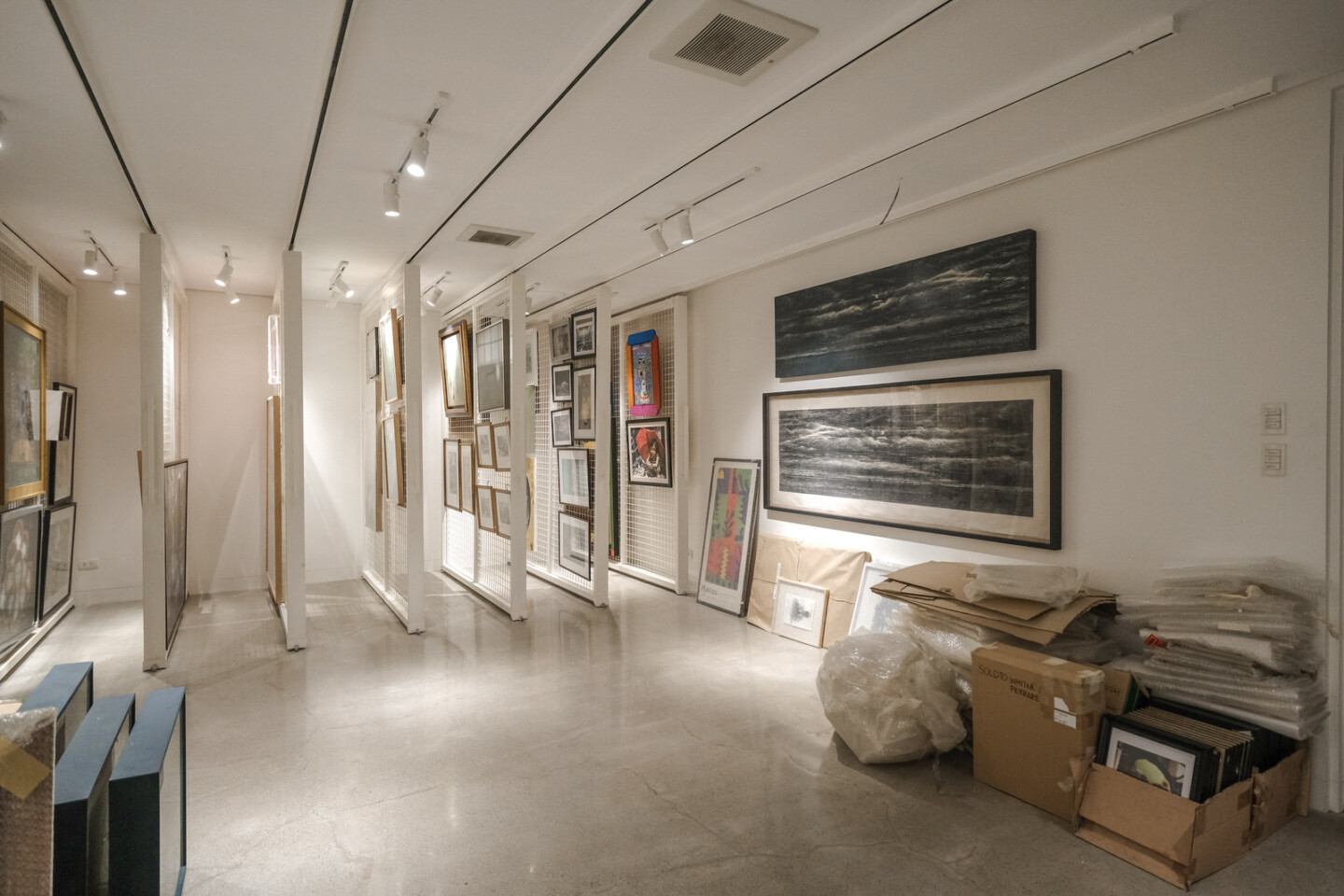In the pavilion where I was to interview Lisa Ongpin-Periquet, there’s a familiar piece that catches my eye. It’s a mish-mash of different things—sculpture, iconography from Philippine pop culture, objects sewn into canvas—and I swear I’d seen something similar before. When Lisa arrives, she tells me it’s a Kawayan de Guia piece, and everything falls into place. One could say that De Guia’s most popular works make use of the familiar to skillfully convey broader truths. And as a centerpiece in Lisa’s pavilion (which, she tells me, is the room with the least art), the coincidence doesn’t go unnoticed.
There are many things that could be said about Lisa. She is the great-great granddaughter of Roman Ongpin, after whom Binondo’s Ongpin Street is named. She, along with Dindin Araneta and Trickie Lopa, founded Philippine Art Events Inc.—the company which brought us Art Fair Philippines, Art in the Park, and The Nonesuch. She also helped establish Salcedo Market, the event that brought life to a previously quiet Salcedo Village. Much like a De Guia piece, her work is also a collage of the familiar lending to a higher message.
But Lisa isn’t too fazed about these accomplishments, despite how large they loom. She’s surprised, even, to be considered a subject for a feature. Far from a laurel to be achieved, Lisa’s work is an organic progression from who she is as a person. And whether that means helping her immediate community or spreading the word of art through Philippine Art Events’ ventures, they’re all equally important to her. Coming from a line that’s helped build the nation, Lisa believes it’s not so much how you help the community, but whether you’ve put the effort to do so in the first place.
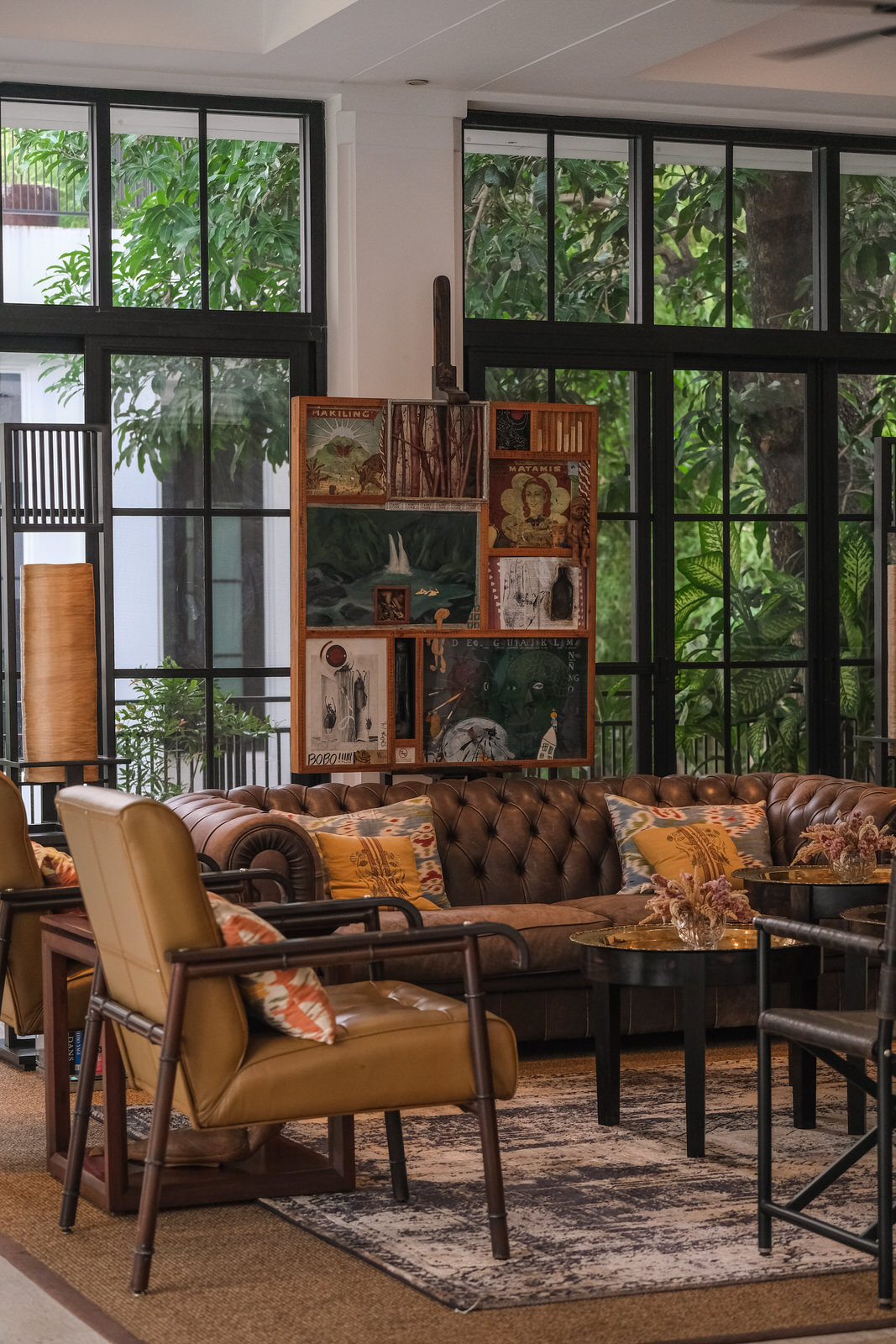
The Ongpin name has a very long legacy. Personally, what was it like growing up as one?
A lot of people ask me: “Why do you like art? Why do you do all this stuff?” I would say the influence came from both sides of the family. But the Ongpin side, in particular, is steeped in both art and business. Many of my relatives are connected to the arts somehow—I have two artist cousins, and I have another cousin who’s an art dealer in London, and an aunt who used to teach the humanities in UP (University of the Philippines). She headed the Alliance Française de Manille and the Cultural Center of the Philippines a long time ago. Another aunt runs an art school in Alabang.
I think it started with the first generation Ongpin in the Philippines. Roman Ongpin, after whom Ongpin Street is named, owned a hardware store like most Chinese-Filipino businessmen, but he specialized in selling art supplies from Europe. Because they were the only store that specialized in art supplies, a lot of the artists congregated there. And at the time of the revolution, artists were part of the intelligentsia fueling revolutionary thought and deeds. They were involved in all of these revolutionary rumblings. Roman Ongpin was also a respected businessman who successfully grew his hardware business, a shop called El 82, that he was able to build a 5-storey building in the main street of Binondo in the early 20th century. He was reputed to have pioneered the concept of fixed prices.
Roman’s wife was the granddaughter of Damian Domingo, an artist who had an atelier in his home in Tondo where he taught art. He became the first Director of the Academia de Dibujo, which was the forerunner of what eventually became the UP School of Fine Arts. Damian’s sons all became painters. They eventually settled in Cagayan De Oro, and took on a different name there, Gabor. His granddaughter married my great-great-grandfather Roman. So it’s like I have artistic leanings on both sides.
I’m thinking that maybe my great-great-grandfather specialized in art supplies because of his wife’s family’s artistic inclinations. The son of Roman Ongpin, Alfonso, is my great-grandfather. He worked in El 82 and later on put up his own business—a frame shop and art gallery called Arte in Avenida, Rizal. This is where he ran what I believe is the first art gallery in the Philippines. So Alfonso’s children—which included my grandfather, Luis—were steeped in this artistic sensibility. The children of Luis, which included my father, Jaime, were so familiar with seeing art in their daily lives.
My Lolo Alfonso collected not only art of the time but also everything about Rizal–documents, personal objects, editions of his writings. His favorite artists were Fernando Amorsolo, Fabian de la Rosa, Juan Luna, and Félix Resurreción Hidalgo. He compiled photograph albums on all of them and collected a lot of papers, paintings, and artwork that have connections to Philippine history and culture.
These important documents are currently in my care, which I’m conserving and putting into albums. You know, making sure everything is acid-free, scanned, and organized properly. They contain photographs and clippings all about the artists. There’s so much information that researchers could use. I’m hoping to publish something with them and hoping to make it accessible to people, because my grandfather kept all those things. If I didn’t, it would be a waste of his effort.
Lisa Periquet’s home office and library.
Some families leave certain legacies, only to have successors who choose to defy it. Why did you decide to walk the same path instead?
I guess it’s because my parents also loved and valued the art and culture of our country. They used to collect from when they were a young couple. It’s not a huge collection, but they have some nice pieces. And my dad often took the lead in purchasing art because he had the exposure to it early in his life.
The Ongpin side also has a very strong patriotic streak. It’s why I love our culture and our country very much, because my ancestors all did. My great-great-grandfather Roman helped the Katipuneros. That’s why he has a statue in Binondo—because he funded them during revolutionary times. He was the one who really admired Rizal, and his son Alfonso really took it a step further by collecting all kinds of things related to Rizal. Not only documents, but things like the clothes of Rizal, or the slippers embroidered by Leonor Rivera. The Rizaliana memorabilia was donated around the 1980s to the National Historical Institute—now the National Historical Commission of the Philippines (NHCP)—and that was all collected by my grandfather.
My father, Jaime V. Ongpin, was also an activist businessman in the 1980s and spoke out against crony capitalism. He believed it was a great harm to our economy during Martial Law. He eventually became the first finance minister of the Cory Aquino government.
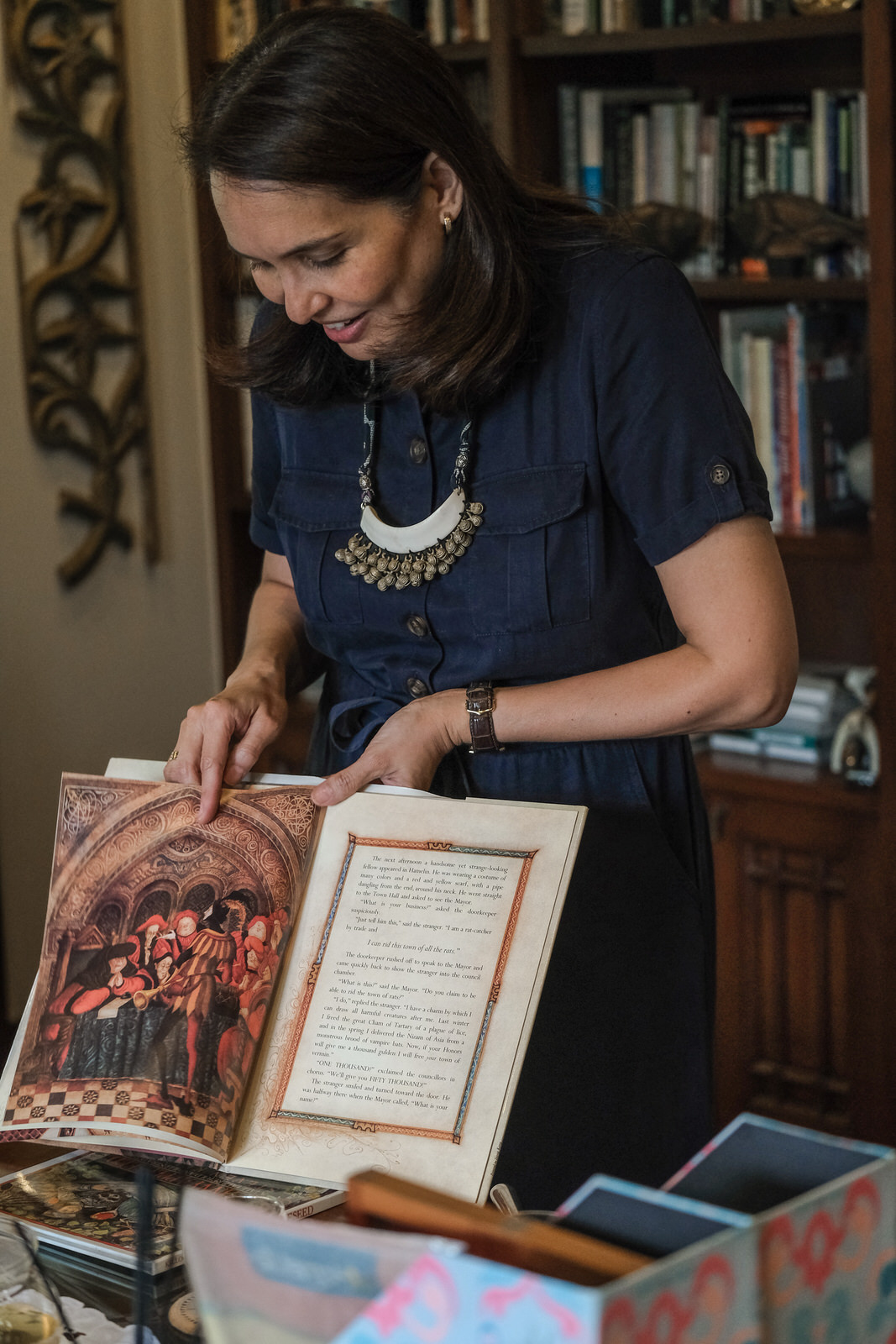
How many hours or days in a week do you actually spend on art?
For me, it’s all my week. I have a lot of artwork. I collect, but I don’t just collect well-known names. I also love the work of up-and-coming artists, especially those I find in Art In the Park each year. I just collect the stuff I like or feel a connection with. But I won’t say I’m saturated with just art—I tend to go through Instagram, online news, or books about it, but I also have other interests, like Philippine culture and heritage. I also used to collect children’s books. I love animals and try to look after their welfare in my community, and I also enjoy traveling both here and abroad.
I also love to go to museums, for one—when I travel, I really seek out museums, especially their “special exhibitions.” There’s so many of them, and I’ve learned so much—from the subject matter all the way to studying and understanding the accompanying texts and how the exhibits are set up. That’s what I mean by being proactive—you travel, seek out these things, and learn.
It matters if you make the effort to do something for your community. Because it makes people happy in their community, and it does something positive for the area.
Since art was the path you decided to choose, what made you decide to go the path of curation as opposed to being a lecturer or an academic?
I don’t want to call myself a curator. I guess the biggest art thing I do now is organize Art Fair Philippines, which does involve some form of curation. We run an art fair and present a platform. Of course, we do craft the fair and that’s a form of curation. That’s as far as our “curation” can go. But in terms of actually working like gallerists do—engaging a curator to help do artist shows—we’re not like that, galleries do that for their artists. So it’s like we organize art events that we feel are important to have so that we can present the art.
So the first one we did—and this is out of the Museum Foundation of the Philippines work we had—was Art in the Park. And it’s counting 17 years. That started during the first anniversary of the Salcedo Market. I was living in Salcedo Village when I first moved back from London. There was a park there, the Velasquez Park where Art in the Park now happens. At the time it was all an asphalted car park, except for a small, grassy strip for the children’s playground. And I noticed in the afternoons the little strip of green was jam-packed with mostly Japanese expat kids, because there were a lot of them living in Salcedo Village.
The economy wasn’t doing so well, and the expats were leaving because of the kidnapping problem that was prevalent then. So I wrote a letter to MACEA—that’s the Makati Commercial Estate Association—and told them that they’d earn a lot of goodwill from the community if they turned Velazquez into an actual green park. Because even if they needed a car park, there were so many empty lots at that time in Salcedo Village that could be used as parking lots.
And well, they paid attention to the letter. They called in Barangay Bel-Air, because Brgy. Bel-Air does maintenance of the park, and Salcedo Village is part of Brgy. Bel-Air. That’s when I realized that it matters if you make the effort to do something for your community. It matters. Because it makes people happy in their community, and it does something positive for the area.
Then, during the first year anniversary of the park, the barangay captain of Bel-Air told us, “Oh, can you think of an event for Salcedo? Because everybody thinks Brgy. Bel-Air is just Bel-Air Village.” That’s when I asked my friend Trickie Lopa—who also lived in the neighborhood—and we tried to come up with an idea of what we could do. Trickie and I thought, “Why don’t we start a market here in Salcedo Village and try to get people to come into the area?”
We went to a few of the markets in Manila to try and get vendors. But while we picked some people from other markets, we also found people from the Barangay Bel-Air community. That’s how Salcedo Market got built up. (whispering) You know, when I started, there were like eleven vendors. So we were really small! And it just kept building up.
So the market started as a community event for Salcedo Village, and it was great. Because at that time, Salcedo Village was very zoned. It was very strict. It was very quiet, residential at night—a little lifeless. You could not have commercial establishments like restaurants on the ground floor. Real estate development was different then. But after a while, they loosened it up. Now it feels like a regular city place, right? It’s a thriving community now, because there’s many things going on.
I like to think the market was the start of that. Because it made it very appealing for people to live there. It’s not exactly a typical wet market; it’s really more of a community market. And our thing was—which Bel-Air has maintained—is not to make it too commercial. So no big brands, but small, home-based businesses, especially from the community.
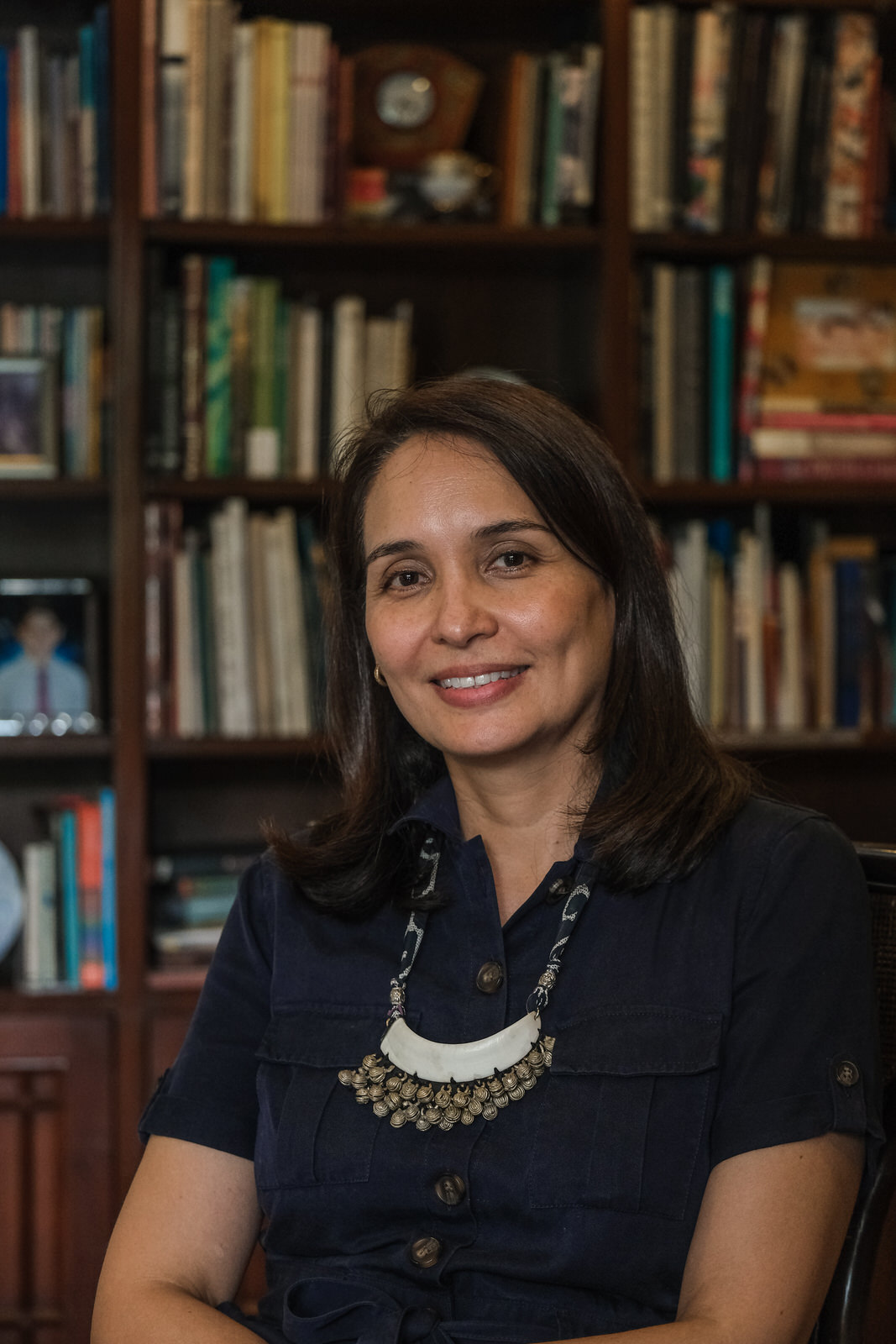
You mentioned that you found your vendors from other places, how did you choose them?
We really wanted to get a balance of food offerings, somebody who can do bread, somebody who can do vegetables, et cetera. And we tried to look for the best ones.
But you know what? It was not easy to convince them. Many of them did not know this park, because it’s kind of hidden—it’s not in a commercial center, so they’d ask where it was. We’d say, “It’s just right there behind Citibank; there’s a park there.” That’s why we could hardly get anybody in the beginning. But we gained recognition little by little—you know, people love to eat, people love to sell. News went around by word of mouth, probably, but who knows?
You could say that it’s a way for people around the area to experience different things.
Yeah, and it keeps the community together, because you see each other there. You know, we only ran that market for around two years—even less than two years—and then we turned it over to Brgy. Bel-Air. And they’ve really looked after it. Every time there’s a market day, they’re there. Whoever’s on the committee now, they hang around the market so people can go and ask them if they can get a space, to give them samples, things like that. It’s nice! I think that brings the community together.
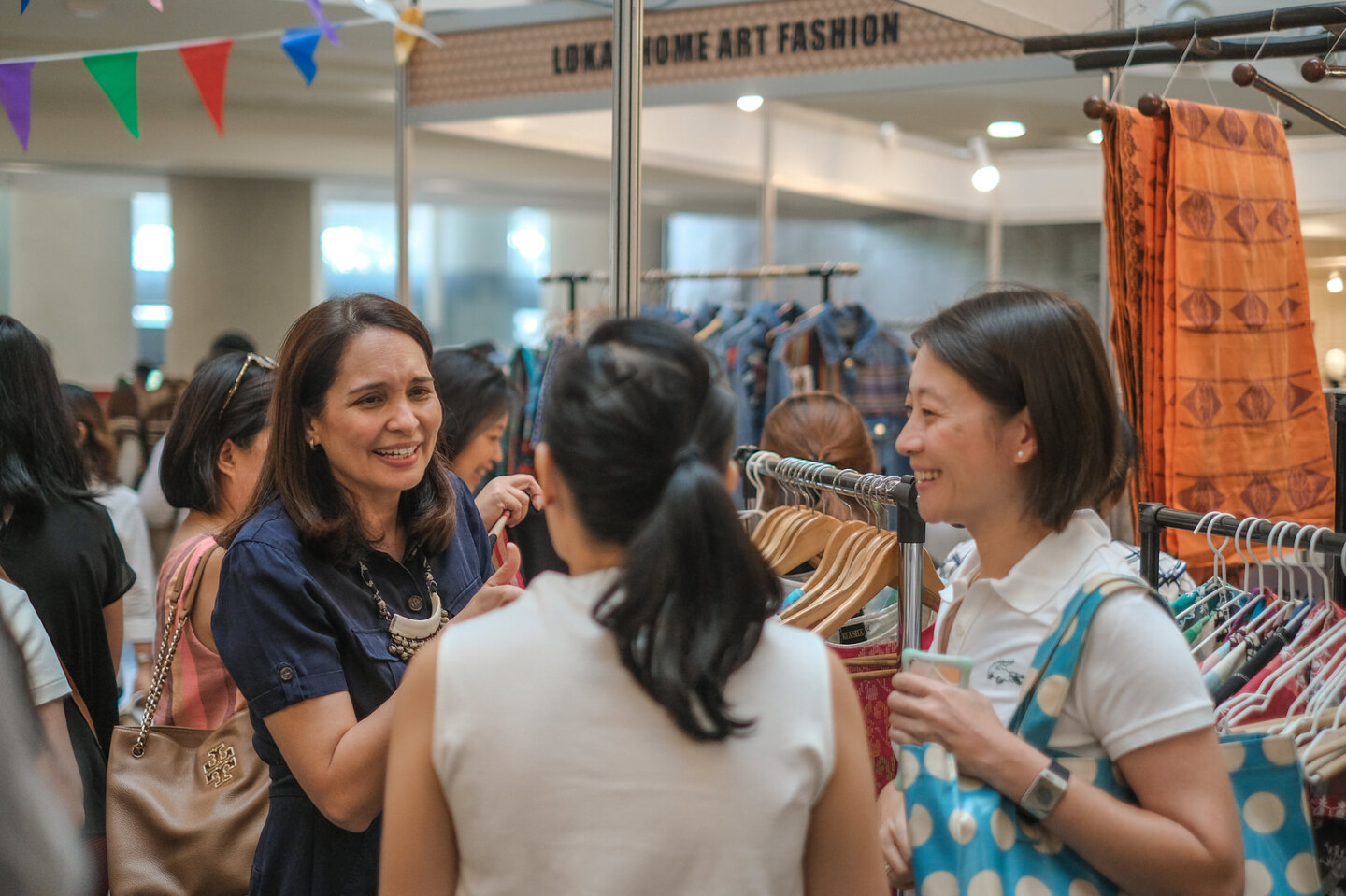
How did Art in the Park come about?
It came about during the second anniversary of Salcedo Market, in 2006. We just had the Bel-Air Pasinaya, a yearly summer event in Bel-Air Village, so we thought of doing some kind of an affordable art fair in Salcedo Village. And we involved the Museum Foundation of the Philippines—because Trickie and I were members there, and Dindin was the Executive Director then—to be the volunteer arm and staff. And then it just grew bigger and bigger. Museum Foundation and the National Museum, of course, were beneficiaries from the start.
So it always was a step-by-step thing, you see. We thought about bringing in affordable art and it went along really well. And then, around the ninth year, it really exploded. Initially, we would time it together with the Salcedo Market because we felt we needed the market-goers to make up the audience. But after some years, it’s now our own event which we hold on a Sunday, separate from market day on Saturday. Brgy. Bel-Air still supports Art in the Park to this day.
What’s the difference between Art Fair Philippines and Art in the Park?
Art in the Park is an affordable art fair, really. We got the idea from the many affordable art fairs abroad. What it really means is making art accessible because we put a limit on the top price. When we started Art in the Park, the most expensive thing you could buy there was for PHP 20,000. We would not allow anything beyond that. And it’s a fundraiser as well for the Museum Foundation of the Philippines, which ultimately helps the National Museum. Today the top selling price is capped at Php70,000, and many pieces are available for much much less than that.
Art Fair PH is more like a contemporary art fair, a bit like Art Basel in Hong Kong or the Frieze Art Fair in London. Essentially, it’s a showcase for contemporary art—or art of our time, art now—and the latest waves going in the field. So we’re always trying to show something new, or something related to modern and contemporary Philippine art.
Previously, we have shown the work of some modern masters. In 2019 we had the late David Medalla, who’s probably our most globally well-known artist. All his work is abroad, but since he was here he did a memory piece for us. He had all these lengths of canvas suspended from the ceiling, and people were invited to sew whatever they wanted into it. At the end of the fair, the canvas became a memory of the event and the many people who collaborated on the piece. I think he’s done that in I think three or four other cities, but never interactively in the Philippines. So that was very nice.
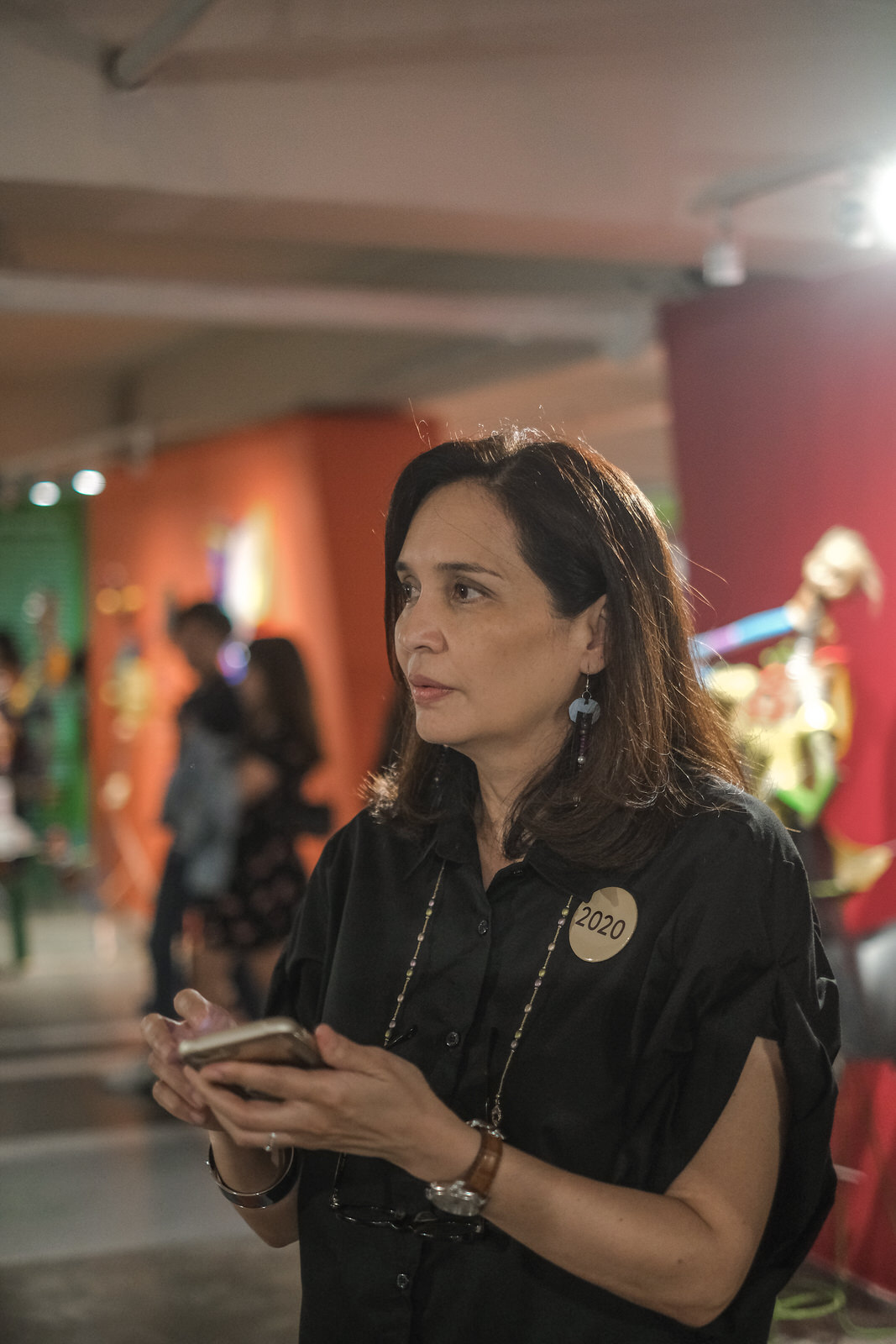
Lisa Periquet in Art Fair Philippines 2020.
Since you talked about how you don’t really curate artists like galleries do, could you explain the distinction?
There are many aspects to the art landscape. Art fairs really are separate from galleries, auction houses, artists, art-makers, and everything else. So the gallery’s role, really—the way modern galleries are now; not all galleries in the Philippines are like that—is to manage the artist’s career. They will have artists on their roster, they have programs to help the artist, they give them shows, they help fund their work. And they help get their artists’ works in the best collections, both private and institutional.
A curator—it can be the gallerist or any other person; “curator” is a very loose term nowadays—is somebody who understands the artist’s work and chooses what to show in the best way possible. It’s more of an artistic exercise in using your judgment and know-how to help the artist. Curators often work hand-in-hand with the gallery and the artists. Ideally, when you have a curator, they can really help the artist blossom. They can suggest a direction, things like that.
An art fair, on the other hand, is more like a venue where you can access art. Usually, in an art fair, you work with galleries—unless you’re a special type of art fair that likes to do something a bit different. But in general, art fairs will work with galleries to show and present the art of the region it’s held in. So if you go to different places, the art is also different. London art fairs would probably feature more London, European artists. And here at Art Fair PH, we feature the best Philippine contemporary art. But we also have a lot of regional galleries who participate because there’s been so much interest from there over the years.
And it’s easier to work with galleries, because they bring in the artwork and set it up. What we do is—I mean, I don’t want to dumb it down and say we’re just doing event organizing, but it’s a specific kind of art event organizing. ‘Cause you just don’t call on galleries, you have to make your judgments on specific galleries you want to include, and which artists you want in the fair. And we have to design the many other elements of the fair too, such as the educational program, which for me is one of the most important elements of the fair.
A curator—it can be the gallerist or any other person; “curator” is a very loose term nowadays—is somebody who understands the artist’s work and chooses what to show in the best way possible.
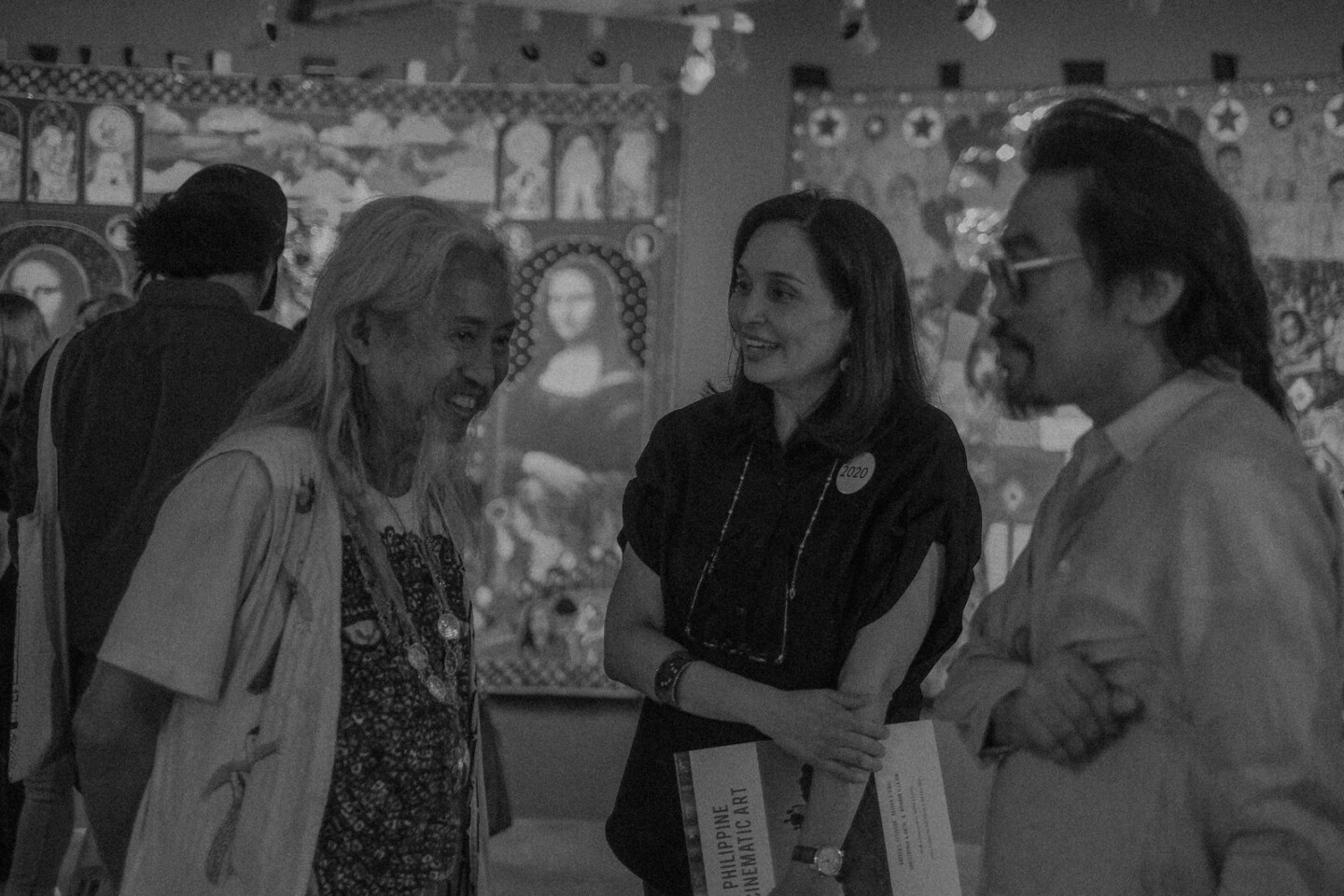
Lisa Periquet with Kidlat Tahimik in Art Fair Philippines 2020.
We have a section of the fair called Project Spaces—which are the Special Exhibitions—where we highlight certain artists, usually with the help of a curator. So we discuss which of these artists we want to highlight. They’re usually young and up-and-coming, mid-career, and established artists. We try to mix it up. There has to be something interesting or significant about them.
Of course, we often have visitors—including speakers—from out of town. One year it was a curator from the Metropolitan Museum of New York, Dr. Kathryn Calley Galitz. She wrote a book on the most important art pieces in the museum called The Metropolitan Museum of Art: Masterpiece Paintings. It’s like a handbook, except it’s actually huge. (laughs) So you see the essence of the museum in all those important works. She talked about her book.
The Italian Embassy also helped us bring in a gallerist from Italy to talk about the gallery practices there. We also had the famous author Sarah Thornton! Have you read Seven Days in the Art World? It’s a very famous book on the different elements of the art scene, and it’s really interesting—people who are into art should read it. To write the book, Thornton went around the different parts of the art world—fairs, fine arts schools, auction houses, et cetera—researching. Then she wrote about each part in separate chapters, where the reader could get a feel of how these elements are all linked together in one world, the art world. I would say it is basic reading for anyone who wants to know how the business of art is conducted.
And then, of course, we have to get all kinds of sponsorships. Sometimes the sponsors present exhibits as well, which we help them conceptualize, so it’s really quite a complicated endeavor. (laughs) We didn’t know much about organizing an art fair in the beginning. We learned mainly by visiting art fairs abroad. Art Fair Philippines started because after we had done Art in the Park for several years, some galleries asked if we could try doing an art fair that’s more in line with the contemporary art fairs abroad. And now we have many art enthusiasts from Asia and beyond that come to visit the fair.
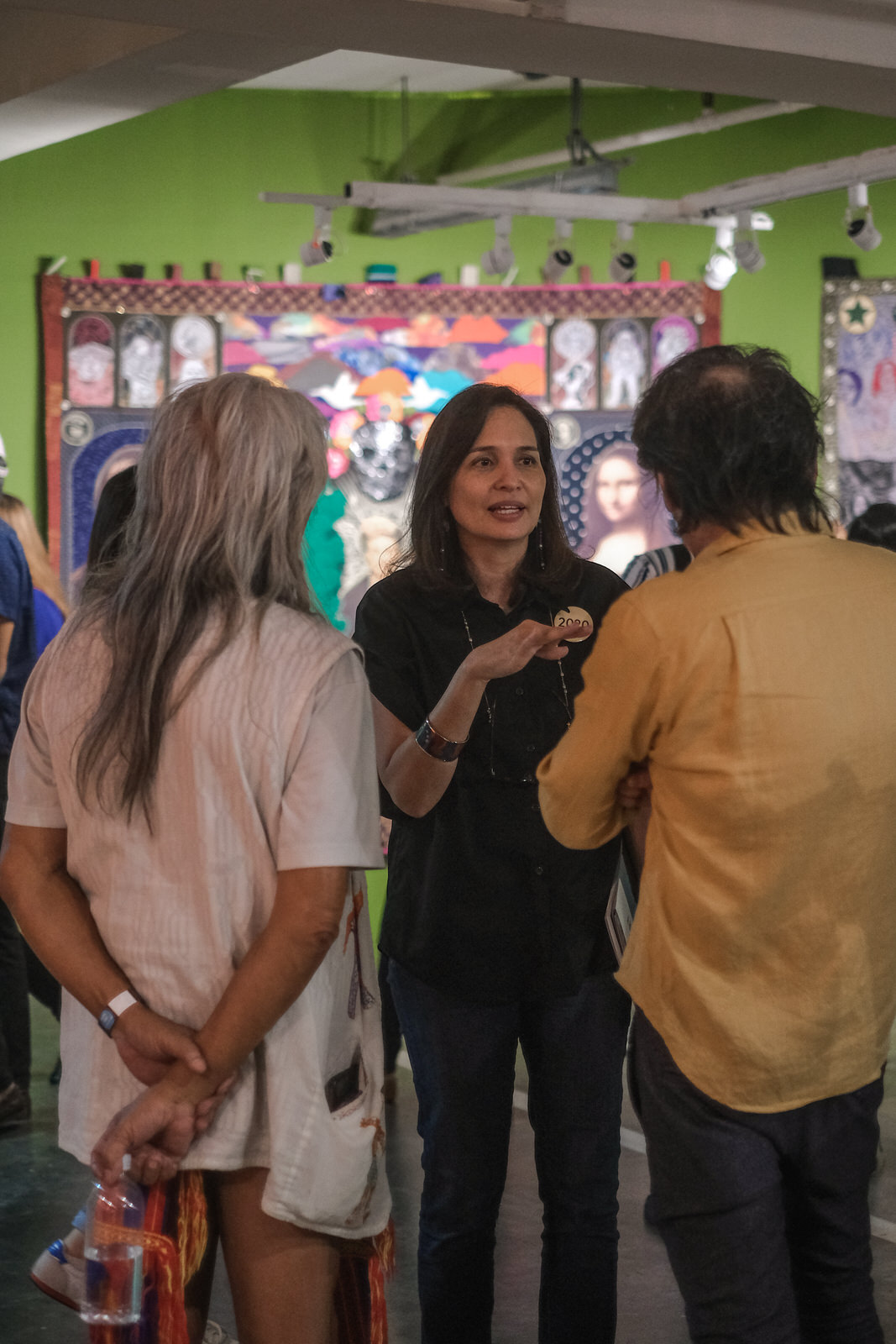
With something this grand of a scale and this complicated, what keeps you guys going, continuing art fair despite it?
We started out with a mission to widen the audience for contemporary art. That means it’s not just for people who collect, but for people who don’t know much about art. We encourage them to come and see the art.
We also have a lot of young people coming to the fair, because one of the things we did was have a student ticket. It was PHP 50.00, for the first two or three years, but we had to raise it because (laughs) it’s impossible to keep it at that and cover our expenses. We did this because we wanted to get young people in. And that’s why we put it in a car park—we wanted the fair to not be intimidating; we wanted it to be accessible to everybody, physically and psychologically. And it’s in a very central part of town.
People in lower economic brackets might think of art as something limited to those in higher brackets. That said, what’s the importance of making art accessible?
I think it goes back to what art could mean for somebody. Like, for me, I think it enhances life. I mean, it may be a cliché, but I always call the art experience “food for the soul.” I like to experience it; it tells me something about people, about the world. Sometimes when we look at art—when we go to museums, when we participate, when we see special exhibits—there’s always something for everybody. It’s a way of learning about the world. And I think it makes the world more interesting—my environment, my surroundings.
And I think we Pinoys are so creative. I mean, we have a natural creativity that other cultures would love to have. So I think all kinds of people here in the Philippines would be interested in art, so why shouldn’t they have a chance to see the best we have to offer?
Art in the Park is also another way we make art accessible. You know, there were many artists who are from that type of economic background that you mentioned. Art in the Park is a great opportunity for them because we work with all sorts of art groups and collectives.
Aside from collectives, we also work with art schools, so those are students who are dying to show their work. I think that’s how you democratize art in a way: by trying to make it accessible to everybody, both the art-makers and the viewers by giving them a chance. Our screening process is looser in Art in the Park. We don’t vet all the pieces. We just try to work with galleries, art groups, and collectives we think would give good quality work and have good artists.
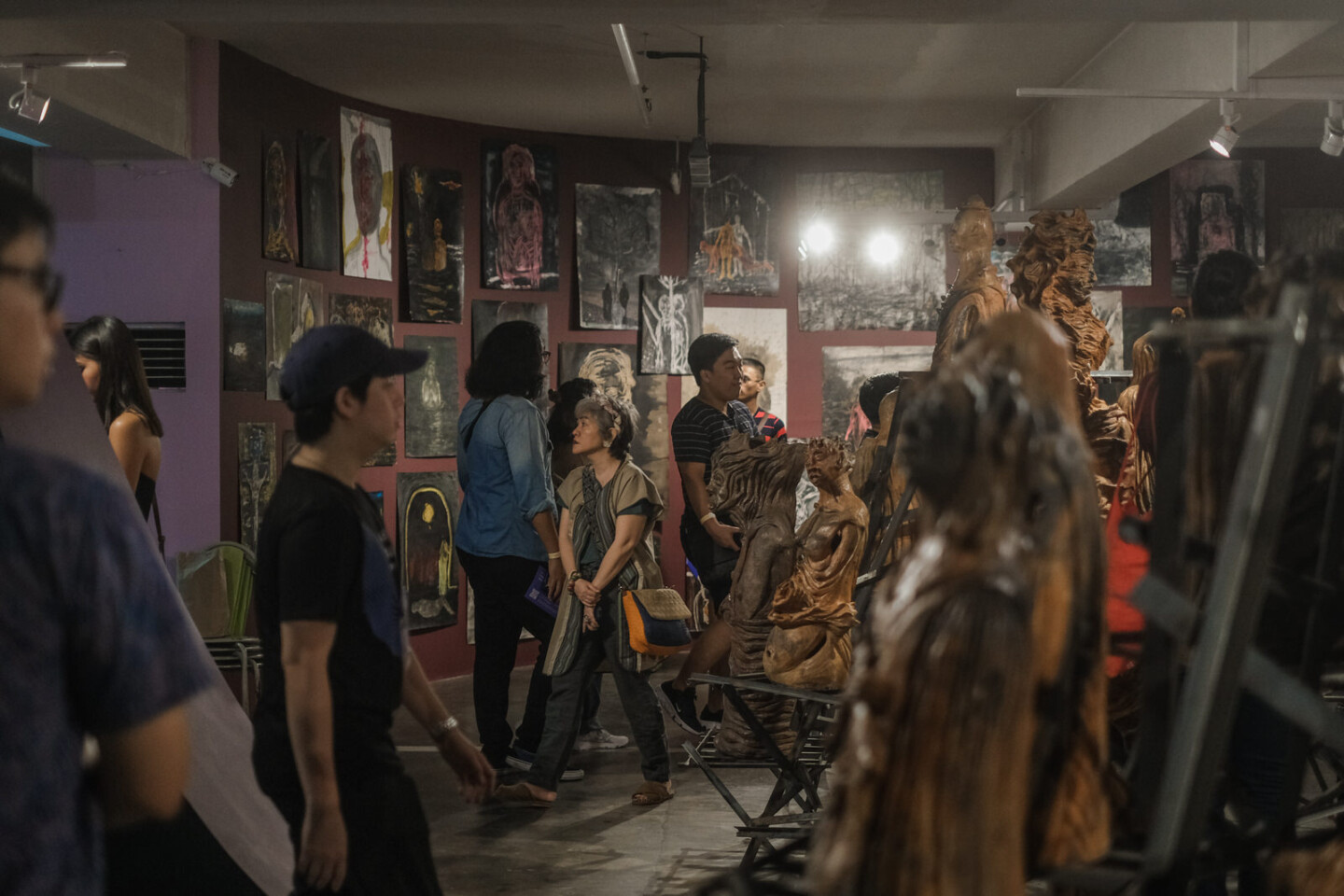
I think that’s how you democratize art in a way: by trying to make it accessible to everybody, both the art-makers and the viewers by giving them a chance.
How do you look for these artists? Is it from word of mouth, or through other ways?
Word of mouth is always a good reason to look into an artist because you’d wonder what’s so great about them. I would say inform yourself; go to a gallery. You don’t have to go to the openings, but if you go to the openings, you can meet the artist. The Art Fair’s also a great venue, because there’s so much art in one place. A lot of the artists go there. Galleries are always there, and it’s always good to chat with them.
The first thing you can always ask when you find a new piece is why the artist is doing this. The simplest questions are okay. That’s the best way to go about it. And just kind of immerse yourself. You can also get the background of the work and the artist when you visit exhibits. And then you can figure out things for yourself, like: do you like abstract art more, or do you like representation art more? Do you like older works? The art landscape is so rich.
In the end, I think you just need to be open-minded and proactive. Be willing to teach yourself. Nobody’s going to tell you what art is. Because art is so… There’s so much going on there.
You can also look into artists that specialize in these kinds of works.
Yeah! And our Talks series in the art fair are where you could learn more. We always like to add something a bit different in the fair—not straightforward lectures but something more participative. So that’s something to look forward to.
In the end, I think you just need to be open-minded and proactive. Be willing to teach yourself. Nobody’s going to tell you what art is. Because art is so… There’s so much going on there. You can attach yourself to one aspect of it if you want. You could say, “Ah, I just like sculpture,” or “I love video art.” Something like that, you know?
You said you often brought guests from abroad to Art Fair PH. Personally, what’s the importance of bringing people from the international art community to the Philippines?
Well, I know it’s been a venue for a lot of networking. I always say it’s a market encounter. Because really, the soul of the art fair is that it’s a commercial endeavor that helps sustain the ecosystem of art. We’re not a museum; we’re trying to get the art out for other people to appreciate it, work with it, and make a living out of it.
For example, we started with a photography section in 2018, and we had a Talks program where the photographers talked about the extrajudicial killings (EJK). I remember there was a very interesting exhibit by Carlo Gabuco, a photographer who won a Magnum award. He had this whole exhibit which included a film around one guy who was killed in an EJK.
We also had some Weegee photographs from the International Center for Photography in New York. Weegee was a famous photographer who probably was one of the pioneers of photojournalism. The guy-on-the-street type of photo-documentation. He used to go to the police stations in New York and take a lot of pictures of what was going on—the fires, the murders, things like that. So our first edition of the Photography section ended up being mostly all documentary. One photographer who was featured in the fair was also part of our Talks panel. He got a grant from a German foundation who had a representative in the talk, to go around Germany to speak to the Filipino communities there about the EJK. There’s many things like that that have happened because of Art Fair PH.
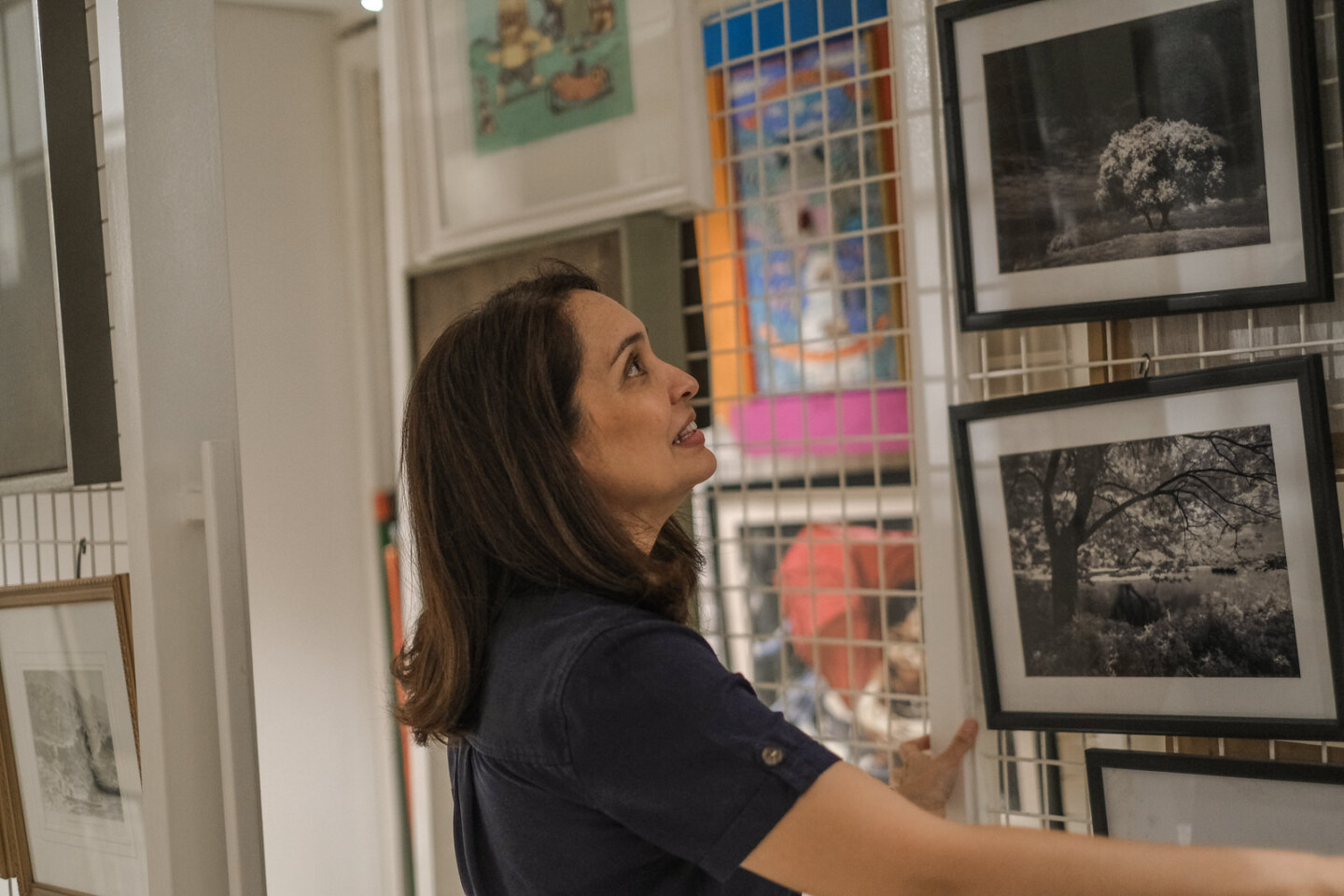
The other thing is we try to get institutions and museum curators to come. They usually do come from the region, like Singapore and Malaysia. We’ve also had a group of people come from the Tate Modern in London. That’s always good, because they want to know what Philippine art is all about. And sometimes after these individuals connected to institutions and galleries come to the fair, they look for a certain local artist’s collections, their exhibits. There have been exhibits that probably happened because of artists they met here. So there’s a lot of networking going on there, a lot of interchange. I think that’s the best thing about the Art Fair. I think it’s great for the art ecosystem.
With your experience with the Salcedo Market and the art fairs, what can you say is the importance of these aspects in creating and building bonds with the community?
Well, in my experience, I had an idea that I was helping the community, but I didn’t think it would make that much of an impact. I just felt so strongly that this was something that could be easily fixed with not much effort or funding. It made sense to me that it would make people happy about living in their community. From that experience, I realized that looking out for your community is important. Your family, your neighbors, your community, your workplace; things like that. And it all leads to building a nation
When I moved here to Forbes Park, I was invited to join the homeowners’ association, so I was a governor here for three years. It started my community work here in the neighborhood, especially for animal welfare. And I still do that particular work, because I love animals. So I’m part of the environment and animal welfare committee. I have a lot of animals here at home. They’re mostly rescues; though some are not. You don’t see them, but I have twenty cats, and eight dogs. I love animals, so the thing I do now is kind of try and help the village association out with the TNVR program for cats—trap, neuter, vaccinate, return—it’s the global standard procedure for controlling cat populations within communities.
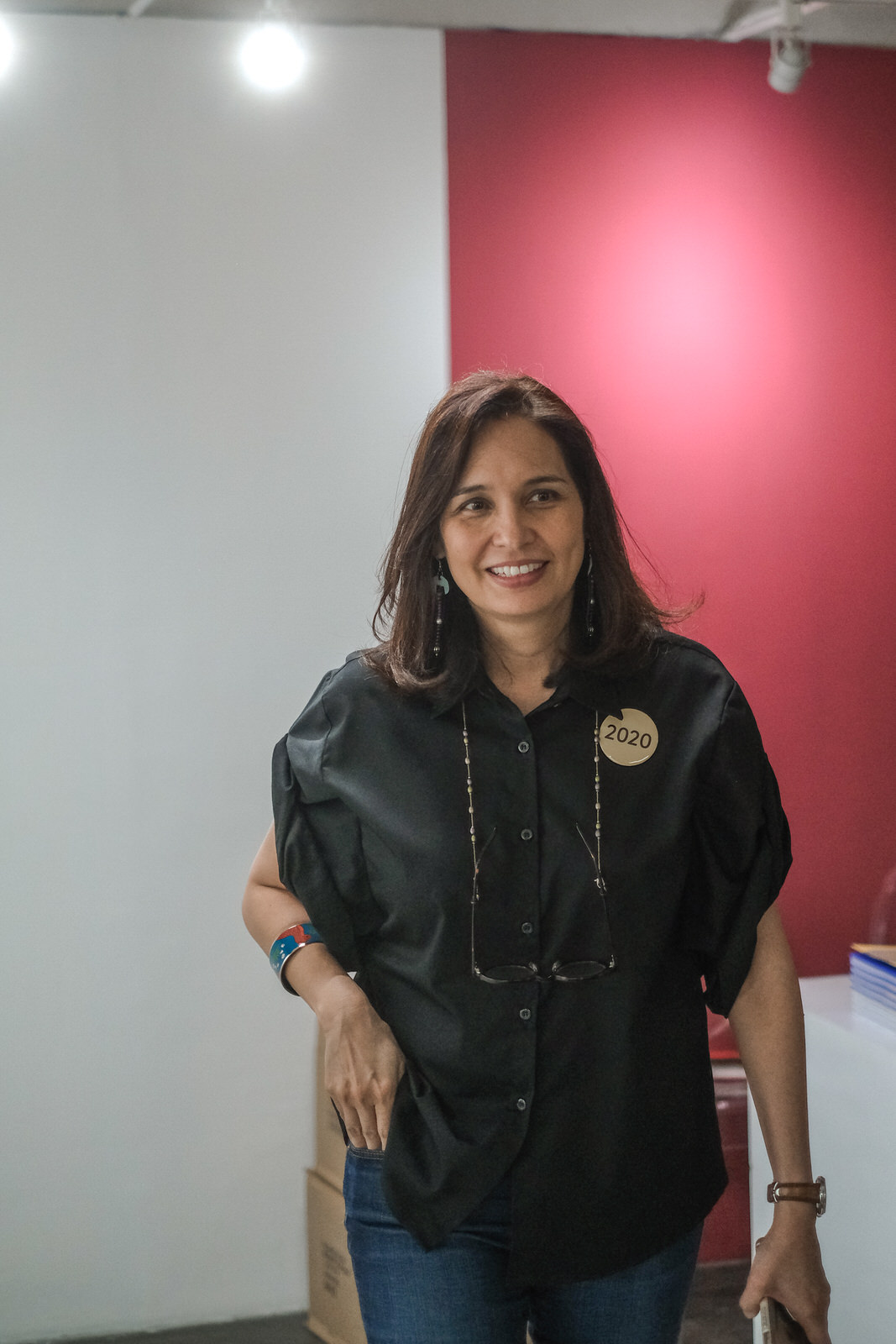

So I guess it’s really about being empathetic to what others might want?
It’s really about being aware about what is important in creating a community, whether in your home or work life, and knowing how to marshal resources to achieve your goals for the community.
CREDITS
WRITER Pam Musni
PHOTOGRAPHER Marvin Conanan
EDITOR Tricia Quintero
An updated and edited interview from 2019 with Lisa Periquet.
SUPPORT PURVEYR
If you like this story and would love to read more like it, we hope you can support us for as low as ₱100. This will help us continue what we do and feature more stories of creative Filipinos. You can subscribe to the fund or send us a tip.

